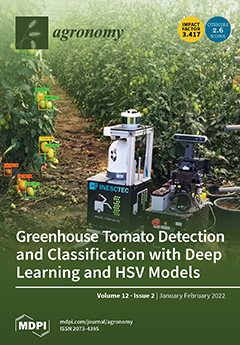The present study assessed soil physical-chemical characteristics as reliable soil health indicators in six climate-smart land use types; agroforestry, community forest, cropland with soil and water conservation (SWC), crop land without SWC, grassland and control across climate-smart villages (CSVs) in Lushoto (Tanzania), Hoima
[...] Read more.
The present study assessed soil physical-chemical characteristics as reliable soil health indicators in six climate-smart land use types; agroforestry, community forest, cropland with soil and water conservation (SWC), crop land without SWC, grassland and control across climate-smart villages (CSVs) in Lushoto (Tanzania), Hoima (Uganda), Wote and Nyando (Kenya). Soils were sampled at three depths; 0–15 cm, 15–45 cm and 45–100 cm and then analyzed for bulk density (BD), pH, exchangeable bases (Ca, Mg, K, Na), extractable Fe, Mn, Zn, exchangeable acidity (ExAc), Electrical conductivity (EC), total carbon (TC), total nitrogen (TN) and cation exchange capacity (CEC). Land use types and sampling depths significantly affected soil properties (
p < 0.05), High bulk density (BD) was measured at 45–100 cm depth in grassland (1.47 g/cm
3) and crop land (1.50 g/cm
3) in Kenya and Tanzania, respectively. BD in Ugandan grasslands was statistically lower (
p < 0.05) than BD in other land use types at all depths. Soil pH of surface soil (0–15 cm) ranged from 6.67 ± 0.67 (agroforestry) to 6.27 ± 0.85 (grassland). Ex. bases (Ca, Mg, K and Na) and extractable Fe, Mn, Zn, ExAc, EC, TC, TN and CEC were significantly affected by land uses (
p ≤ 0.05). Soil properties were significantly correlated, a positive correlation between silt % (
p < 0.01) and pH, sand and Ca (
p < 0.05). EC and pH, exchangeable Ca, exchangeable bases, exchangeable K and C: N ratio was observed. There was a negative correlation (
p < 0.05) between pH and clay. The study has shown that improving soil properties using land use systems leads to an increase in soil nutrients.
Full article





